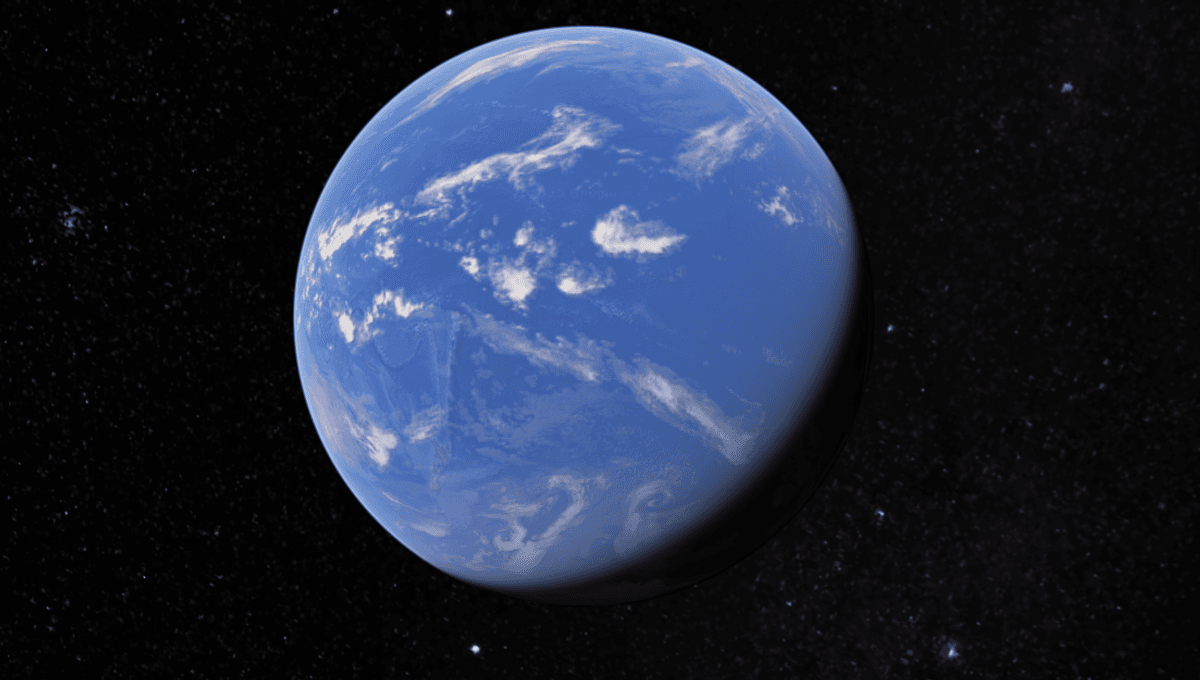
Our planet is a water world. Around 71 percent of Earth’s surface is covered by sea – and this view of the world really hits that home.
The image from Google Earth shows the middle of the Pacific Ocean, the largest and deepest ocean on Earth with a total area of over 155 million square kilometers (60 million square miles), according to NOAA.
That’s not even accounting for its mammoth depth. The Pacific has an average depth of 4,000 meters (13,000 feet) and features the deepest known point on Earth: the Challenger Deep in the Mariana Trench, plunging about 10,984 meters (36,037 feet) below sea level. As the largest ocean basin in the world, the Pacific holds more than half of the Earth’s open water supply.
While it’s possible to see the faint edges of the Americas and Australia on either side, Earth essentially looks like a perfectly blue marble. In fact, you could easily mistake this planet for Uranus or Neptune, two gas giants that appear blue due to the presence of methane in their atmospheres.
If you’ve ever flown on a trans-Pacific flight between North America and Asia or Australia, you might have some grasp of how vast the Pacific is. A flight from Sydney to Los Angeles will take you around 15 hours, the overwhelming majority of which time is spent cruising over the sea.
Aside from a few atolls and islands – the Hawaiian Islands being the most obvious – the middle of the Pacific is unbelievably devoid of features. Within this expanse is Point Nemo, the most remote place on Earth and the furthest point in the ocean from land in any direction.
In 2024, IFLScience spoke to Chris and Mika Brown, two British explorers who visited Point Nemo as part of their mission to visit all the Poles of Inaccessibility. Chris described this part of the Pacific like so: “I was expecting it to be really kind of black or a really dark green, having seen the Atlantic Ocean, but it’s a fantastic blue. I was amazed, just looking down it’s almost an iridescent blue. Amazing, very beautiful.” Other than its color and a few angry albatrosses, there weren’t many other features to comment about.
The Pacific was named by Portuguese explorer Ferdinand Magellan in 1520 who led the first recorded crossing of the ocean. He called it Mar Pacifico, or Pacific Ocean, in honor of its apparently passive and peaceful waters (although it actually harbors some of the roughest and most volatile seas on Earth).
With great size comes great influence. The Pacific Ocean plays an integral role in Earth’s climate system. It is the engine behind major climate phenomena like El Niño and La Niña, which can drastically alter weather patterns around the globe, from droughts in Australia to flooding in South America. These events are driven by changes in ocean temperature and atmospheric pressure, highlighting how this remote body of water can have consequences with the wider planet.
So, never underestimate the Pacific. It may look like a giant, blue void from certain angles, but this ocean is a dynamic realm teeming with life, history, and forces that shape the rest of the planet.
Source Link: This View Of The Pacific Will Change The Way You See Planet Earth